 Khổ 19 x 27cm; Dày: 100 trang
Khổ 19 x 27cm; Dày: 100 trang
| Mục lục | |
Trang |
|
| Lời Tòa soạn | 3 |
| TỐNG TRUNG TÍN Giáo sư Phan Huy Lê với khảo cổ học |
4 |
| BÙI VĂN LIÊM Giáo sư Phan Huy Lê với Bộ Lịch sử Việt Nam 30 tập |
15 |
| LÊ HẢI ĐĂNG, LƯU VĂN PHÚ VÀ NGUYỄN PHÚC CẦN Các di tích khảo cổ học thời đại Đá ở cao nguyên đá Đồng Văn (Hà Giang) |
17 |
| NGUYỄN QUANG MIÊN, NGUYỄN QUANG BẮC, VŨ ANH HÙNG VÀ LÊ MINH SƠN Một số dẫn liệu về địa khảo cổ học ở miền Tây Nam Bộ |
30 |
| NGUYỄN NGỌC QUÝ, TRẦN QUÝ THỊNH Đồ gốm tiền sơ sử Nam Trung Bộ trong mối quan hệ với khu vực |
46 |
| NGUYỄN GIANG HẢI, PHẠM ĐỨC MẠNH Đàn đá: Nhìn từ Nam Trung Bộ Việt Nam |
55 |
| ĐINH THỊ THANH NGA Gốm men trong đợt khai quật lần thứ 6 khu di tích Bạch Đằng (Quảng Ninh) |
75 |
| BÙI HỮU TIẾN Đối thoại với di sản khảo cổ học: Nghiên cứu phức hệ di tích Vườn Chuối (Hà Nội) |
87 |
| Contents | |
|
|
Page |
| Editor’s note | 3 |
| TỐNG TRUNG TÍN Professor Phan Huy Lê with Archaeology |
4 |
| BÙI VĂN LIÊM Professor Phan Huy Lê with 30 volumes of Vietnamese History |
15 |
| LÊ HẢI ĐĂNG, LƯU VĂN PHÚ AND NGUYỄN PHÚC CẦN Stone-age sites in Đồng Văn Karst Plateau Geopark (Hà Giang province) |
17 |
| NGUYỄN QUANG MIÊN, NGUYỄN QUANG BẮC, VŨ ANH HÙNG AND LÊ MINH SƠN Some geo-archaeological data from western part of Southern Việt Nam |
30 |
| NGUYỄN NGỌC QUÝ, TRẦN QUÝ THỊNH Pre - protohistorical ceramics from the Southern part of central Việt Nam in the regional relationship |
46 |
| NGUYỄN GIANG HẢI, PHẠM ĐỨC MẠNH Lithophones: Viewed from the Southern part of Central Việt Nam |
55 |
| ĐINH THỊ THANH NGA Glazed ceramics from the sixth test-excavation at Bạch Đằng area of (Quảng Ninh province) |
75 |
| BÙI HỮU TIẾN Dialogue on archaeological heritage: Research on the complex of Vườn Chuối sites (Hà Nội) |
87 |
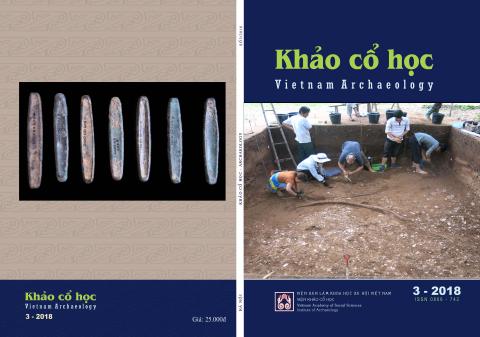 Khổ 19 x 27cm; Dày: 100 trang
Khổ 19 x 27cm; Dày: 100 trang
| Mục lục | |
Trang |
|
| NGUYỄN KHẮC SỬ Những thành tựu nổi bật trong hợp tác nghiên cứu Khảo cổ học Việt Nam với Liên Bang Nga |
3 |
| PHẠM THANH SƠN, HOÀNG VĂN DIỆP, BEN MARCWICK, NGUYỄN TIẾN HÒA, NGUYỄN THỊ MAI HƯƠNG VÀ CÔNG THỊ DIỆP Nhận thức mới về di chỉ Mậu A (Yên Bái)qua kết quả thám sát năm 2015 |
12 |
| NGUYỄN THỊ THÚY, NGUYỄN GIA ĐỐI Phác thảo về đời sống và tổ chức xã hội của cư dân Thạch Lạc (Hà Tĩnh) |
39 |
| NGUYỄN QUANG BẮC, NGUYỄN QUANG MIÊN, VÀ PHẠM VĂN MẠNH Xác định lại vị trí, tọa độ các địa điểm khảo cổ học văn hóa Óc Eo của Louis Malleret |
53 |
| THÂN VĂN TIỆP, NGUYỄN THẮNG Loại hình và kỹ thuật gốm men xanh ngọc thời Lý tại 62 - 64 Trần Phú (Hà Nội) |
63 |
| NGUYỄN LÂN CƯỜNG Sưu tập tiền cổ ở khu vực chùa Nhẫm Dương, huyện Kinh Môn (Hải Dương) |
77 |
| Contents | |
|
|
Page |
| NGUYỄN KHẮC SỬ Outstanding achievements in research cooperation between Việt Nam and Russian Federation |
3 |
| PHẠM THANH SƠN, HOÀNG VĂN DIỆP, BEN MARCWICK, NGUYỄN TIẾN HÒA, NGUYỄN THỊ MAI HƯƠNG AND CÔNG THỊ DIỆP New perception of Mậu A site (Yên Bái) through the results of the test-excavation in 2015 |
12 |
| NGUYỄN THỊ THÚY, NGUYỄN GIA ĐỐI Sketch of life and social organization of Thạch Lạc population (Hà Tĩnh province) |
39 |
| NGUYỄN QUANG BẮC, NGUYỄN QUANG MIÊN, AND PHẠM VĂN MẠNH Identification of locations and coordinates of Óc Eo - culture sites by Louis malleret |
53 |
| THÂN VĂN TIỆP, NGUYỄN THẮNG Typology and technology of Lý - period celadon ceramics from the site at 62 - 64 Trần Phú (Hà Nội) |
63 |
| NGUYỄN LÂN CƯỜNG Collection of ancient coins in the area of Nhẫm Dương pagoda, Kinh Môn district (Hải Dương) Nội) by gas chromatography mass spectometry |
77 |
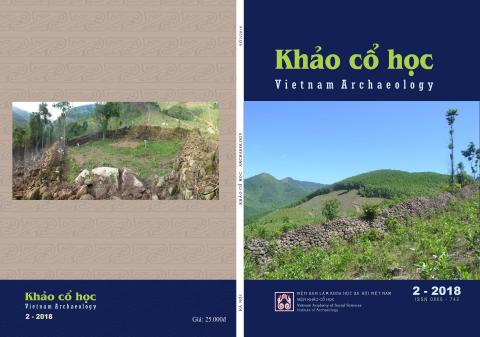 Khổ 19x27cm; Dày: 100 trang
Khổ 19x27cm; Dày: 100 trang
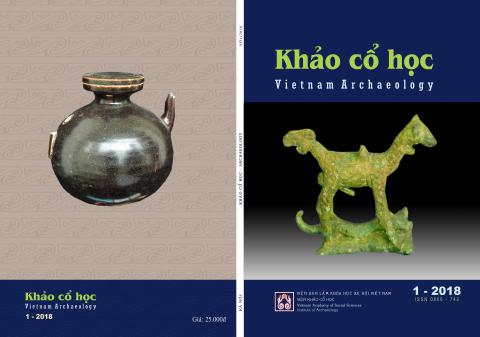 Khổ 19 x 27cm; Dày: 100 trang
Khổ 19 x 27cm; Dày: 100 trang
| Mục lục | |
Trang |
|
| NGUYỄN ANH TUẤN, NGUYỄN THỊ MAI HƯƠNG, TRƯƠNG HỮU NGHĨA, TRẦN THỊ MINH Di chỉ cổ sinh hang Pắc Đây (Lạng Sơn) |
3 |
| TRÌNH NĂNG CHUNG Di tích hang Thẳm Choóng (Tuyên Quang) |
15 |
| BÙI HỮU TIẾN Không gian văn hóa Đồng Đậu: đặc điểm và những mối liên hệ |
27 |
| TRẦN QUÝ THỊNH, NGUYỄN NGỌC QUÝ Giao lưu và hội nhập Tiền Sa Huỳnh - Sa Huỳnh ở Tây Nguyên |
46 |
| PHẠM VĂN TRIỆU Nghiên cứu trục trung tâm Cấm thành Thăng Long thời Lý và thời Trần qua tư liệu khảo cổ học |
54 |
| NGUYỄN ĐỨC BÌNH Đồ gốm sứ thời Lý và thời Trần tại Bảo tàng Hòa Bình |
64 |
| NGUYỄN HỮU MẠNH Văn hóa Champa ở Bình Định trong mối giao lưu với hệ thống trao đổi của chính thể Vijaya thế kỷ X - XV |
80 |
| Mục lục | |
Trang |
|
| PHẠM THANH SƠN, BÙI VĂN LIÊM, NGUYỄN THƠ ĐÌNH, NGUYỄN XUÂN MẠNH Sưu tập di vật đá di chỉ Nậm Luồng (Lai Châu) |
3 |
| NAM C.KIM Nhận thức vai trò của chiến tranh thời Tiền sử ở châu thổ sông Hồng |
13 |
| HOÀNG XUÂN CHINH Quá trình hình thành và sụp đổ nước Nam Việt trước sự thôn tính của nhà Hán qua tự liệu khảo cổ và lịch sử |
30 |
| HOÀNG THÚY QUỲNH Sơ lược các phương pháp và thành tựu nghiên cứu kỹ thuật chế tạo đồ gốm Tiền sơ sử |
38 |
| NGUYỄN VĂN ĐÁP Kết quả khai quật khảo cổ khu di tích chùa Dạm (Bắc Ninh) |
48 |
| NGÔ THỊ LAN Tìm hiểu nghệ thuật trang trí hình lá đề một số di tích thời kỳ Angkor, so sánh với Việt Nam |
63 |
| QUẢNG VĂN SƠN, CAO QUANG TỔNG Di tích Đồng Dương (Quảng Nam): phát hiện và nhận thức |
72 |
| CAO THẾ TRÌNH, NGUYỄN HUY KHUYẾN, MAI MINH NHẬT, LÊ XUÂN HƯNG Kho tiền cổ Păng Tiêng (Lâm Đồng): Tư liệu và thảo luận |
81 |
| Mục lục Tạp chí Khảo cổ học năm 2017 | 93 |
| Giới thiệu sách | 98 |
| contents | |
|
|
Page |
| PHẠM THANH SƠN, BÙI VĂN LIÊM, NGUYỄN THƠ ĐÌNH, NGUYỄN XUÂN MẠNH Assemblage of stone artifacts from Nậm Luồng site (Lai Châu province) |
3 |
| NAM C.KIM Recognizing the Significance of Prehistoric Warfare in the Red River Delta |
13 |
| HOÀNG XUÂN CHINH History of Nanyue state’s formation and collapse with the annex of Han Dynasty through archaeological and historical data |
30 |
| HOÀNG THÚY QUỲNH Sketchy approaches and research achievements in prehistorical production of pottery |
38 |
| NGUYỄN VĂN ĐÁP Results of the archaeological excavation at the site area of Dạm pagoda (Bắc Ninh province) |
48 |
| NGÔ THỊ LAN Study of decorative art on Bodhi leaves from some of the Angkor-period sites in comparision to those in Việt Nam |
63 |
| QUẢNG VĂN SƠN, CAO QUANG TỔNG Đồng Dương site (Quảng Nam province): Discovery and Perception |
72 |
| CAO THẾ TRÌNH, NGUYỄN HUY KHUYẾN, MAI MINH NHẬT, LÊ XUÂN HƯNG Păng Tiêng warehouse of coins (Lâm Đồng province): Data and discussion |
81 |
| CONTENTS OF KHẢO CỔ HỌC (JOURNAL OF ARCHAEOLOGY) IN 2017 | 93 |
| Book Recommendation | 98 |
| Mục lục | |
Trang |
|
| NGUYỄN KHẮC SỬ, NGUYỄN NGỌC Phân chia địa tầng kỷ Đệ tứ và phân kỳ khảo cổ học tiền sử Việt Nam |
3 |
| NGUYỄN LÂN CƯỜNG Sự giống nhau giữa Nam Đảo và Úc qua những bằng chứng về cổ nhân học ở Việt Nam |
15 |
| NGUYỄN TRƯỜNG ĐÔNG, TRÌNH NĂNG CHUNG Ngườm Vài - Di chỉ văn hóa Bắc Sơn ở Cao Bằng |
29 |
| NGUYỄN QUANG MIÊN, VŨ ANH HÙNG, NGUYỄN QUANG BẮC Niên đại nhóm di tích cồn sò điệp ở Nghệ An và Hà Tĩnh |
52 |
| LƯU VĂN PHÚ Tư liệu và nhận thức về di chỉ Chùa Gio (Hà Nội) |
64 |
| TRƯƠNG VĂN MÓN (SAKAYA) Gợi mở một góc nhìn mới về mối quan hệ Funan với Champa |
75 |
| NGUYỄN VĂN ANH Từ kết quả nghiên cứu khảo cổ học phục dựng Bảo tháp ở Thái lăng bằng công nghệ 3D |
84 |
| NGUYỄN ĐÌNH CHIẾN Kim sách triều Nguyễn |
93 |
| Tin hoạt động Khảo cổ học | 100 |
| contents | |
Page |
|
| NGUYỄN KHẮC SỬ, NGUYỄN NGỌC Quaternary geological stratification and archaeological divisions of Vietnamese prehistory |
3 |
| NGUYỄN LÂN CƯỜNG Similarities between Austronesian and Australoid through anthropological evidence in Việt Nam |
15 |
| NGUYỄN TRƯỜNG ĐÔNG, TRÌNH NĂNG CHUNG Ngườm Vài - a Bắc Sơn - culture site in Cao Bằng province |
29 |
| NGUYỄN QUANG MIÊN, VŨ ANH HÙNG, NGUYỄN QUANG BẮC Dates of mollusc-mound sites in Nghệ An and Hà Tĩnh provinces |
52 |
| LƯU VĂN PHÚ Data and perceptions of Chùa Gio site (Hà Nội) |
64 |
| TRƯƠNG VĂN MÓN (SAKAYA) Suggesting a new perception of Funan Champa relationship |
75 |
| NGUYỄN VĂN ANH Reconstruction of the stupa at Thái mausoleum by 3D technology based on archaeological research results |
84 |
| NGUYỄN ĐÌNH CHIẾN Golden books from Nguyễn dynasty |
93 |
| News of Archaeological Activities | 100 |
Mục lục
Trang |
|
| NGUYỄN SỸ TOẢN Tìm hiểu đời sống cư dân các văn hóa Tiền Đông Sơn qua đồ gốm |
3 |
| TRỊNH SINH Các phương pháp đúc trống đồng loại II Heger |
9 |
| PHẠM LÊ HUY Hiện vật ấn “Sắc mệnh chi bảo” nhìn từ tổ chức Hành khiển ty (Nội mật viện) thời Lý - Trần |
22 |
| NGUYỄN VĂN ĐÁP Di tích thành Xương Giang (Bắc Giang) qua tư liệu khai quật khảo cổ học |
43 |
| ĐẶNG VĂN THẮNG Kiến trúc và tượng trong tháp, chùa Việt Nam (tiếp cận khảo cổ học Phật giáo) |
60 |
| ĐẶNG HỒNG SƠN Lược thuật tình hình phát triển khảo cổ học biển đảo ở Trung Quốc trong 30 năm trở lại đây |
71 |
| PHẠM MINH PHÚC Nghiên cứu so sánh nhà ở của người Dao Áo Dài ở hai tỉnh Hà Giang và Lai Châu |
93 |
| contents | |
Page |
|
| NGUYỄN SỸ TOẢN Study of pre-Đông Sơn culture human life through ceramics |
3 |
| TRỊNH SINH Methods for casting bronze drums of Heger type II |
9 |
| PHẠM LÊ HUY Seal “Chiming zhibao” viewed from Bureau of Imperial Affairs from Lý - Trần period |
22 |
| NGUYỄN VĂN ĐÁP Xương Giang citadel site (Bắc Giang) through data of archaeological excavation |
43 |
| ĐẶNG VĂN THẮNG Architecture and statues of Vietnamese towers and pagodas (approach of archaeological Buddhism) |
60 |
| ĐẶNG HỒNG SƠN Summary of development situation of marine-island archaeology in China for the past 30 years |
71 |
| PHẠM MINH PHÚC Comparative research on accommodation of Dao Áo Dài in Hà Giang and Lai Châu provinces |
93 |
|
Mục lục
LÊ HẢI ĐĂNG, TRẦN QUÝ THỊNH,NGUYỄN NGỌC QUÝ, LƯU VĂN PHÚ Di chỉ Bản Nàng 1 (Thanh Hóa) trong bối cảnh khảo cổ học tiền sử thượng du sông Mã |
3 |
| TRỊNH HOÀNG HIỆP, NAM C.KIM Kết quả nghiên cứu thành Cổ Loa (giai đoạn 2007 - 2014) |
12 |
| TRỊNH SINH Các kiểu dáng cơ bản của trống loại II Heger |
33 |
| HÀ VĂN CẨN Nhận thức về khu di tích Đền Trần và Chùa Tháp qua các đợt khai quật năm 2006 - 2007 |
40 |
| NGUYỄN HỒNG KIÊN Vấn đề xác định niên đại các di tích kiến trúc cổ truyền bằng gỗ của người Việt |
58 |
| NGUYỄN VĂN CHUYÊN Vài nét về hoạt động giao thương ở hạ lưu sông Lam thế kỷ X - XIX |
68 |
| BÙI VĂN HIẾU Khai quật thám sát thương cảng Nước Mặn lần thứ hai |
76 |
| R Tư liệu dịch PETER BELLWOOD Sự di cư và nguồn gốc của người Homo Sapiens |
90 |
| LÊ HẢI ĐĂNG, TRẦN QUÝ THỊNH, NGUYỄN NGỌC QUÝ, LƯU VĂN PHÚ Bản Nàng 1 site (Thanh Hóa) in the prehistorical context in upper part of Mã river |
3 |
| TRỊNH HOÀNG HIỆP, NAM C.KIM Results of research into Cổ Loa citadel (2007 - 2014) |
12 |
| TRỊNH SINH Basic forms of Heger - type II drums |
33 |
| HÀ VĂN CẨN Perception of Trần Temple and Tháp Pagoda area through excavations in 2006 - 2007 |
40 |
| NGUYỄN HỒNG KIÊN Dating issues of Vietnamese traditional wooden architectural relics |
58 |
| NGUYỄN VĂN CHUYÊN Some features about interactive trade activities in the lower part of Lam river in the tenth - ninteenth centuries |
68 |
| BÙI VĂN HIẾU Second test excavation at Nước Mặn trade port |
76 |
| R Documentation PETER BELLWOOD Migration and the origins of Homo Sapiens |
90 |
-Tác giả: Nicolas Revire 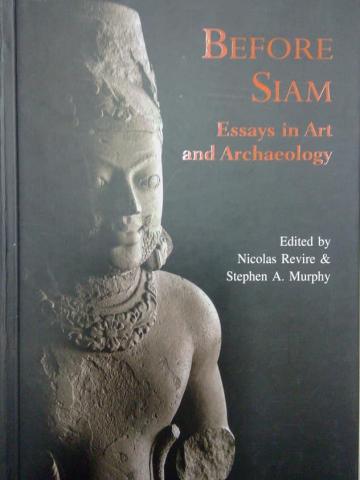 và Stephen A.Murphy
và Stephen A.Murphy
- Nxb: River Books và The siam Society
- Khổ sách: 18,1 x 3,3 x 24,7cm
- Số trang: 432tr
- Năm xuất bản: 2013
Before Siam Essays in Art an Archaeololy (Vương quốc Xiêm sớm - là một vương quốc của Thái Lan trước đây: những tiểu luận về nghệ thuật và khảo cổ).
Xin trân trọng giới thiệu !
 và Stephen A.Murphy
và Stephen A.Murphy- Nxb: River Books và The siam Society
- Khổ sách: 18,1 x 3,3 x 24,7cm
- Số trang: 432tr
- Năm xuất bản: 2013
Before Siam Essays in Art an Archaeololy (Vương quốc Xiêm sớm - là một vương quốc của Thái Lan trước đây: những tiểu luận về nghệ thuật và khảo cổ).
Siam (Nghĩa tiếng việt là Xiêm) là quốc hiệu chính thức của Thái Lan từ thời nhà Chakri được thành lập năm 1782 cho đến ngày 23 tháng 6 năm 1939.
Nội dung cuốn sách là giới thiệu các nghiên cứu và khám phá mới để tái tạo lại các nền văn hóa, thuyết phục tôn giáo và truyền thống nghệ thuật ở Thái Lan hiện đại và các vùng lân cận. Với sự đóng góp đa dạng của các chuyên gia nổi tiếng, công chúng và học giả sẽ đạt được sự đánh giá cao hơn và đa dạng hơn về lịch sử ban đầu này, đóng một vai trò hình thành trong sự ra đời của Xiêm La.Xin trân trọng giới thiệu !
Ngô Thị Nhung
- Tác giả: Trung tâm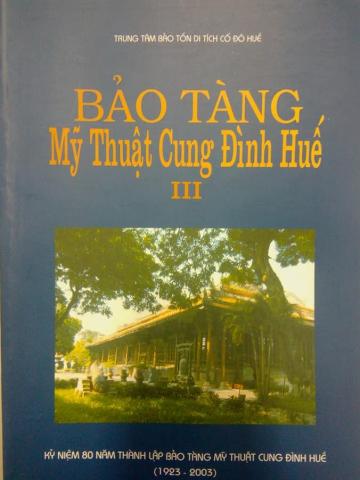 Bảo tồn di tích cố đô Huế
Bảo tồn di tích cố đô Huế
- Khổ sách: 19 x 27 cm
- Số trang: 174 (kèm theo phụ lục ảnh)
- Năm xuất bản: 2003
Nội dung cuốn sách: Cuốn sách là kỷ yếu hội thảo nhân kỷ niệm 80 năm thành lập Bảo tàng Mỹ thuật cung đình Huế (1923 - 2003). Nội dung tập hợp tất cả các bài viết của nhiều tác giả khác nhau viết về các chủ đề xoay quanh Bảo tàng Mỹ thuật cung đình Huế như vấn đề chung, giới thiệu cổ vật, hoạt động nghiệp vụ, lịch sử - văn hóa - mỹ thuật.
Xin trân trọng giới thiệu!
 Bảo tồn di tích cố đô Huế
Bảo tồn di tích cố đô Huế- Khổ sách: 19 x 27 cm
- Số trang: 174 (kèm theo phụ lục ảnh)
- Năm xuất bản: 2003
Nội dung cuốn sách: Cuốn sách là kỷ yếu hội thảo nhân kỷ niệm 80 năm thành lập Bảo tàng Mỹ thuật cung đình Huế (1923 - 2003). Nội dung tập hợp tất cả các bài viết của nhiều tác giả khác nhau viết về các chủ đề xoay quanh Bảo tàng Mỹ thuật cung đình Huế như vấn đề chung, giới thiệu cổ vật, hoạt động nghiệp vụ, lịch sử - văn hóa - mỹ thuật.
Ngô Thị Nhung
Trang
Copyright © 2016 by khaocohoc.gov.vn.
Thiết kế bởi VINNO
Tổng số lượt truy cập: 10405464
Số người đang online: 20
